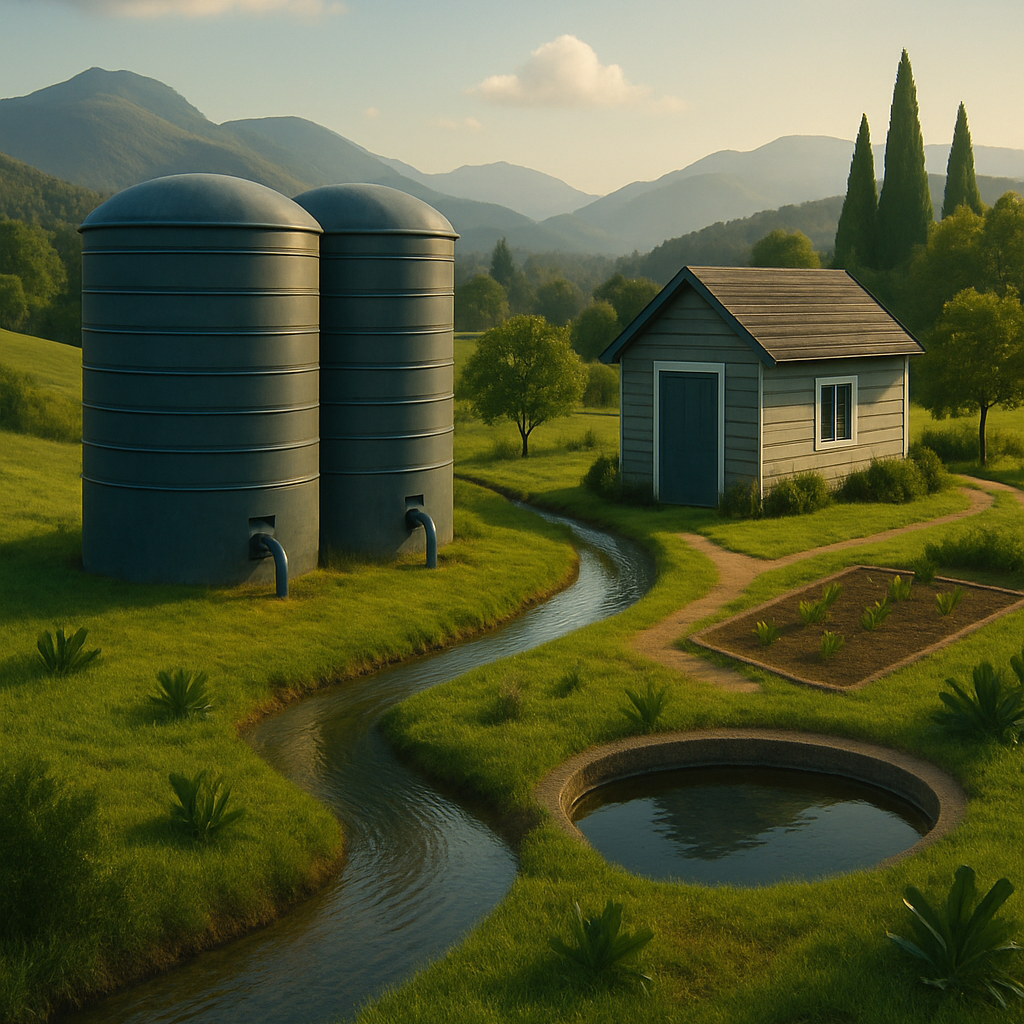Approx. 6 min read
In Australia, water is not just a resource — it’s a threshold. A limit. The thing you run out of first. And when you do, everything else follows.
Yet water independence remains an afterthought in most homes. It shouldn’t be. It’s not difficult. It’s not exotic. It just requires a shift in mindset — and a solid plan.
1. Know Your Demand
Track household, garden, livestock and emergency (fire) usage. Double it for design. That’s your benchmark.
2. Maximise Harvest
Every 100m² roof can yield 100,000L annually. Use every structure: sheds, shade sails, even greenhouses. Fit gutters, diverters, and filters in sequence.
3. Store Wisely
Metal tanks preferred. Start with 20,000L minimum. Elevate if possible. Install isolation taps and overflow management. Fire services need easy access.
4. Deliver and Filter
A diesel or solar-backed pump is essential. Redundancy matters. Sediment + carbon filters for household; UV if potable. Label all valves clearly.
5. Design for Fire
Have a dedicated fire tank. Install sprinklers. Fit hose reels with reach. Protect fittings from radiant heat and plan for system isolation if needed.
Final Word
The tech is mature. The tools exist. What’s needed is foresight. Water sovereignty isn’t fringe — it’s foundational. And it’s completely within reach.
